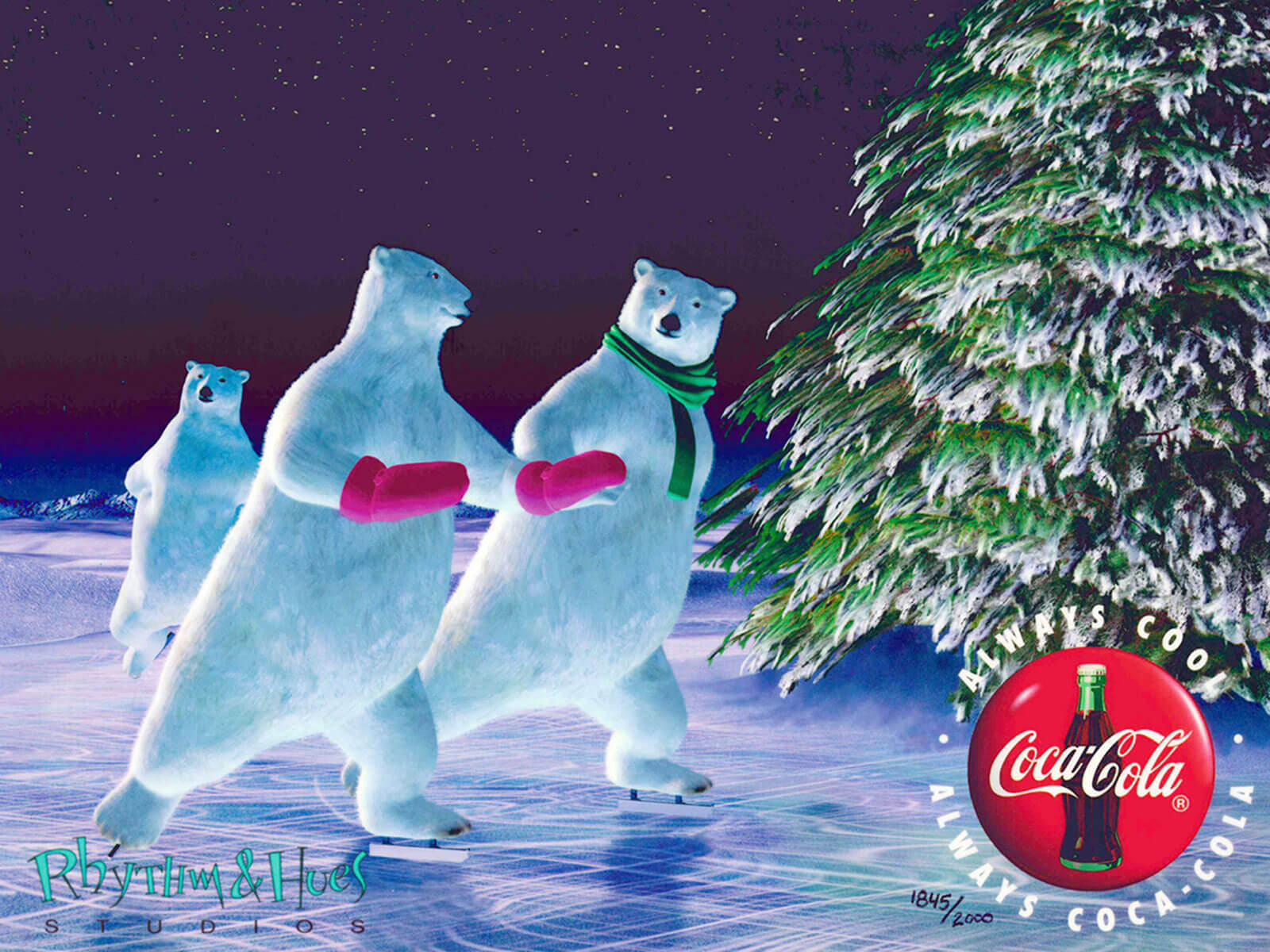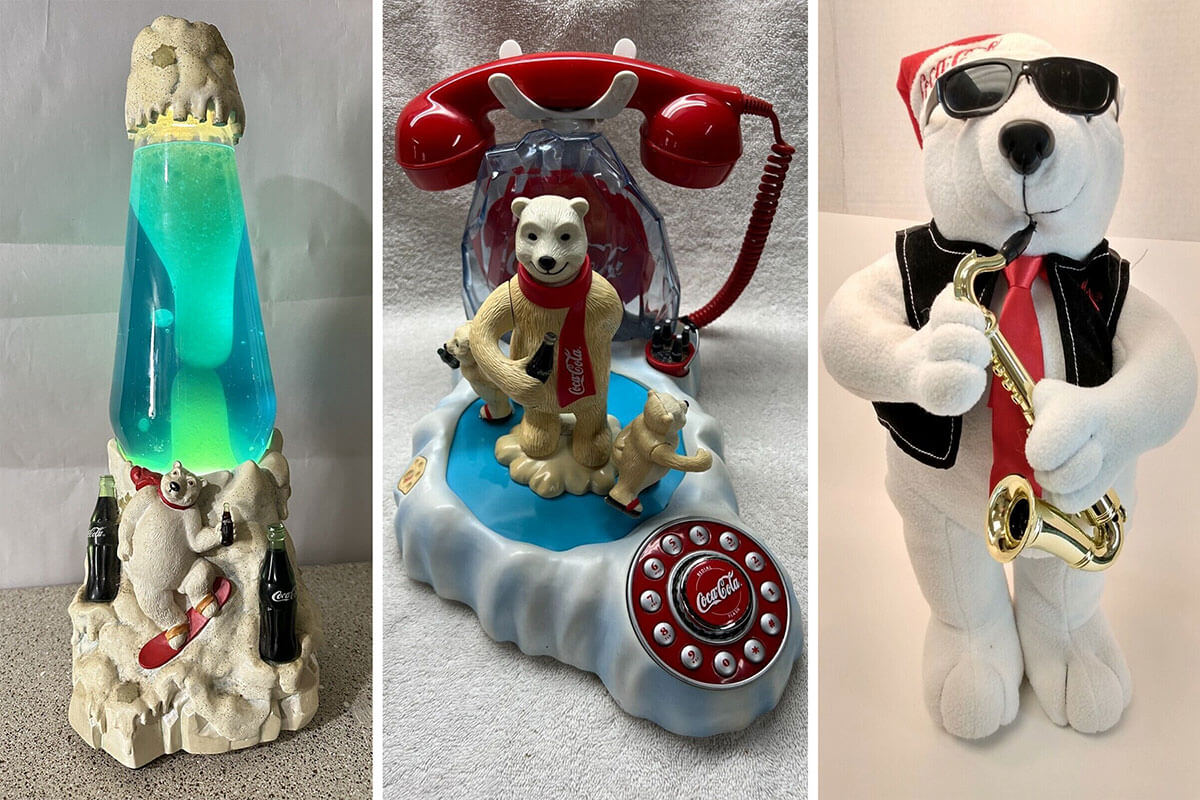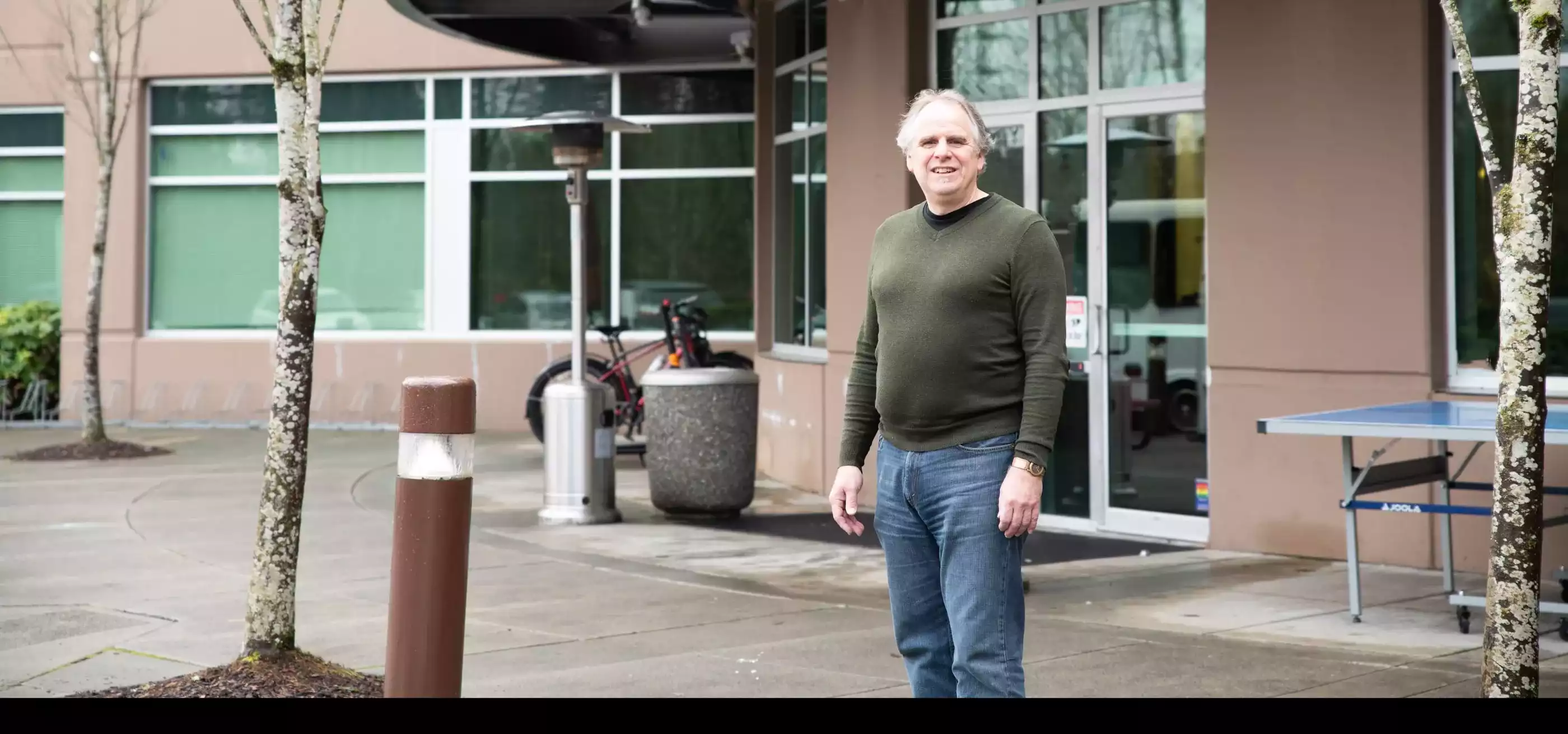DigiPen instructors bring remarkable professional experiences to the classroom. In our Faculty XP series, we’ll zoom in on some of those fascinating career histories with focused Q&As.
Woody and Buzz Lightyear totally changed the game in 1995 when Toy Story made its debut as the world’s first entirely computer-animated feature film. The groundbreaking movie was also DigiPen MFA in Digital Arts Program Director Mark Henne’s first film credit at Pixar, where he would spend nearly 18 years as a technical director on a venerable greatest hits list of the studio’s animated films, including A Bug’s Life, Monsters Inc., The Incredibles, Ratatouille, Wall-E, and Brave.

Two years before Toy Story, Henne also worked on one of the first fully computer-animated commercials ever created for TV screens, Coca-Cola’s classic 1993 holiday ad, “Northern Lights.” The wordless spot, featuring a pack of furry polar bears plopping down to watch the aurora borealis and sip on some ice-cold Coke, quickly became a global sensation. The polar bears turned into cultural icons, spawning a massive marketing campaign, an avalanche of merchandising, and decades more commercials that had them hanging out with Santa Claus and participating in the Winter Olympics — a campaign Coca-Cola continues to this day.
Henne would go on to contribute to the first four Coca-Cola polar bear commercials during his time at Rhythm & Hues, the Hollywood visual effects studio where he began his computer graphics career as a technical artist in 1990. On the 30th anniversary of “Northern Lights,” we sat down with Henne to chat about his early days in the industry bringing the beloved bears to life.
How did you get into 3D computer graphics at such an early point in the field’s development?
My high school had an architecture program I was taking courses in. I was good at it, but I wasn’t great at it. I knew it wasn’t going to be my calling. I had good technical and math skills though, and I enjoyed the drawing I did in the engineering drafting courses, so I had this interest in science-meets-design. I was trying to figure out what I wanted to do with that.
I was kind of unique for the time because when I was going through high school in the late 70s and early 80s, there were no PCs at that point, so very few people had access to programming. But I did, actually. I grew up near the University of Illinois Urbana-Champaign, so I had access to university computers and was learning programming. As I was taking these architecture courses doing isometric and perspective drawings, I started to think, “Huh, this is a very follow-the-recipe way of drawing. I bet you could write a program to do this.” So that was kind of the start!
Then I started seeing films and TV commercials with some of the earliest computer graphics and animation. That was kind of the rebirth of visual effects in film at that point with Star Wars and Indiana Jones. All of a sudden, I figured out what I wanted to do — make pictures with a computer! I wanted to do computer graphics and animation. I didn’t know exactly what that meant, but I was going to figure it out.
How did you end up over at Rhythm & Hues?
I actually ended up over there straight out of grad school. I got my Master’s in Computer Science at UC Santa Cruz in 1990 focusing on computer graphics. My thesis work there was on smooth skin deformation for character animation. When I graduated, my professor reached out to me and said, “I have a friend at this studio in Hollywood, Pauline Ts’o, who has this studio named Rhythm & Hues. They’re looking for somebody doing the kind of things you’ve been working on. You should reach out.”
I got the job description, and if I were going to write my own job description, that would have been it! It was exactly what I wanted to do. I interviewed, got the job offer and got them to wait a few months for me to finish my thesis before starting.
What was a computer graphics studio like in 1990?
It was a brand-new emerging field — so new that there were hardly any computers out there that were capable of doing it. The computers we used at Rhythm & Hues were Silicon Graphics computers. They were something like $30,000 to $35,000 per workstation. It was tough to get access to quality equipment at that stage. It was a small studio, roughly 50 or 60 people. I worked on a variety of things, like Star Trek: Deep Space Nine, Babe, and even a test for the Pillsbury Doughboy. The Doughboy commercials were being done in stop-motion at the time, but they thought, “Hey, maybe this can be done with this new computer animation thing!” We did a test and didn’t get the job, but I did get to see and hold the physical stop-motion replacement heads for the Pillsbury Doughboy!
Your work on the Coca-Cola polar bear commercials involved research and development on the same smooth skin deformation technology you did your thesis on. Could you break that down a bit?
At the time, skinning [binding a 3D character’s skin to its poseable “skeleton” so that it moves accurately] wasn’t really a thing. The industry hadn’t really figured out what it was or how to do it yet, so a lot of what I was figuring out was just the simple “what” and “how” of things. I was specifically trying to figure out how to get the polar bears’ skin to move more naturally. The main animator on the first “Northern Lights” polar bear ad was Peter Farson, and he’d written a skinning program called Dawgie that the studio had been using. All our tool names at the studio ended in ‘-ie’ for some reason! Dawgie needed improvement though in order to do this commercial right, so I worked with Peter on improving Dawgie to get skinning working better on the polar bears.
Given the tech at the time, did skinning the polar bears pose some unique challenges?
One of the challenges with character skinning in general is around the hips. That was a big part of it, just figuring out how to interpolate between not rotating, and fully rotating through the bear’s joints, and how to blend that. That was particularly challenging on the polar bears, some of which had to do with the bears’ shape. Characters with stouter designs make it tougher to get the deformations to look right. Also, there was just the fact that quadrupeds are much different compared to bipeds. That 90-degree bend across the hips is a unique challenge that works much differently than it does for humans.
But the other thing was, this was just a totally new challenge, period! Maya didn’t exist yet. The two computer animation programs that were in common use then were Alias and Wavefront. Neither of them did smooth skin deformations. Instead of paying for the super expensive software licenses, Rhythm & Hues actually re-engineered Wavefront and wrote their own version of it. They named it “Rhythm.” They also wrote their own modeling program, named “And.” Then, of course, they wrote their own custom rendering software too, and named it “Hues.”
Because it was all in-house software, if they were going to do something, they had to do the programming themselves. That’s what I was a part of on the polar bears. I actually wasn’t part of the software development team at that point, I was assigned to work on specific commercials and other projects sometimes writing code, sometimes doing visual effects animation — what they would call a technical artist — but I was working on programming and skinning for the polar bears.

It’s reported that one fellow Rhythm & Hues animator, Todd Shifflett, almost accidentally deleted the entire ad during production! Are there any standout memories you have from your time working on the polar bear ads?
I just remember that we were really excited about the reception that the first commercial got! It was actually shown at the Museum of Modern Art at their annual “The Art and Technique of the American TV Commercial” exhibition, which they jointly curate with the Association of Independent Commercial Producers. They pick the best of American TV commercials and have a special program of them each year.
I worked on the first “Northern Lights” spot, did additional skinning development on the two 1994 Lillehammer Winter Olympics ads shortly thereafter with the bears doing ski jump and luge, and I also worked on the ice skating spot that introduced the bear cubs for the first time. It was a lot of fun!
What was it like to work on something that became emblematic of an entire holiday season?
You’d just be like, “Hey, they’ve got refrigerator magnets with the polar bears on them now! Ooh, now they’ve got postcards!” It’s really rewarding to see something you helped create become a cultural icon. It’s fun to see that they’re still around today, that they’re something Coca-Cola continues to use and develop. I definitely look back with fondness on those polar bears.
